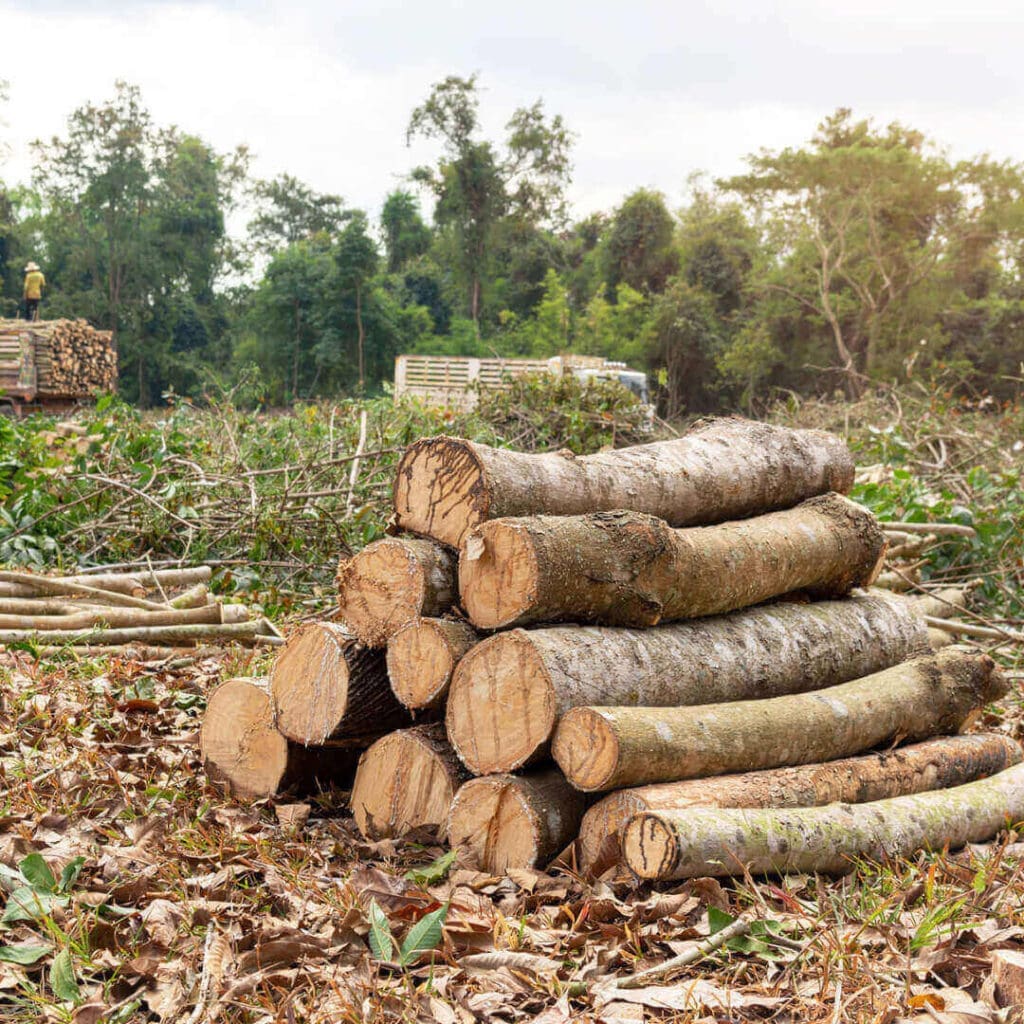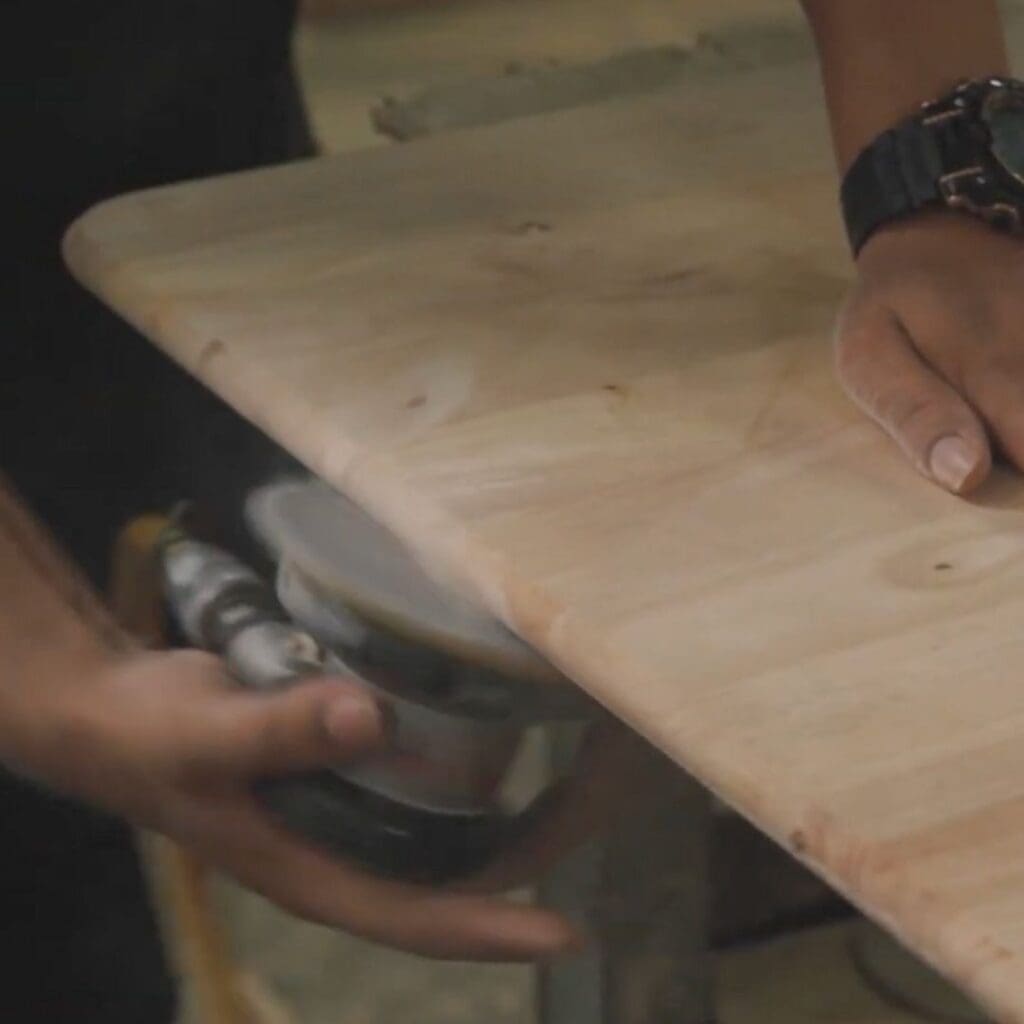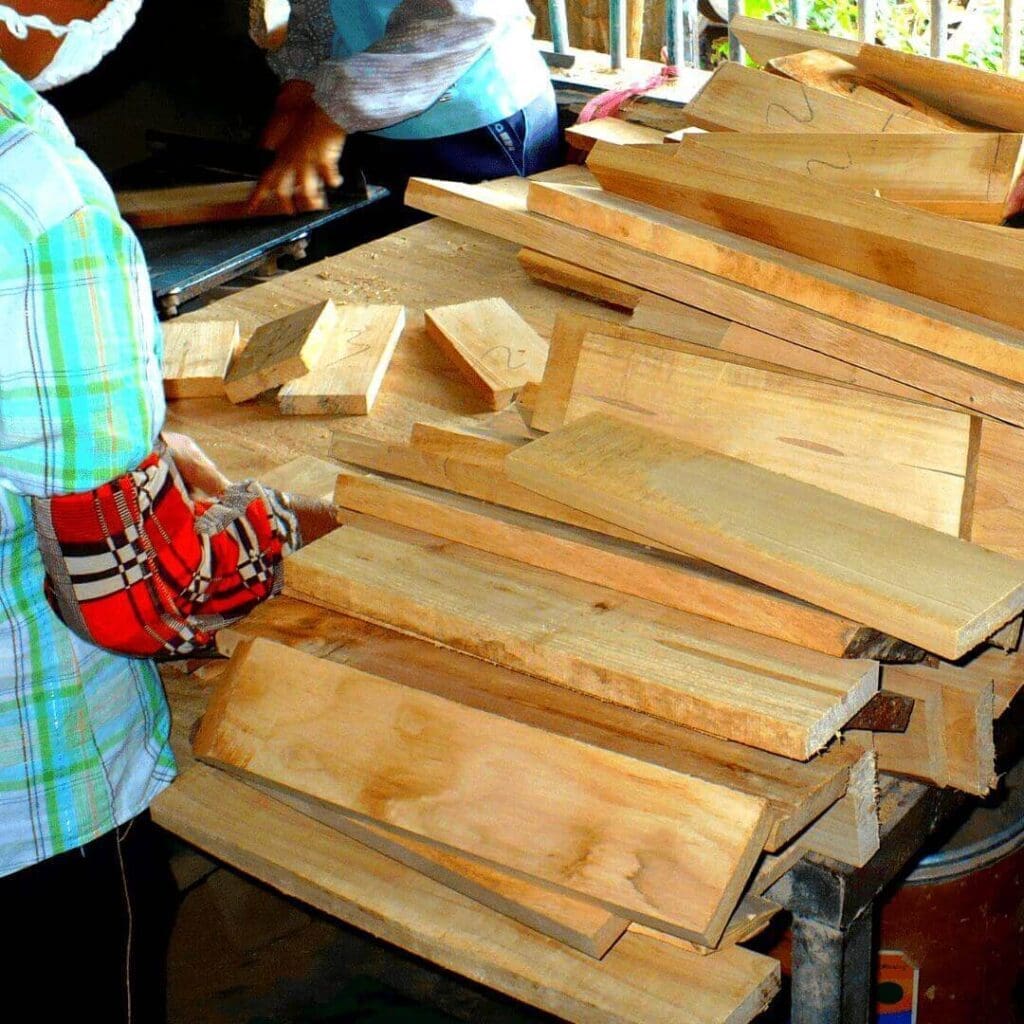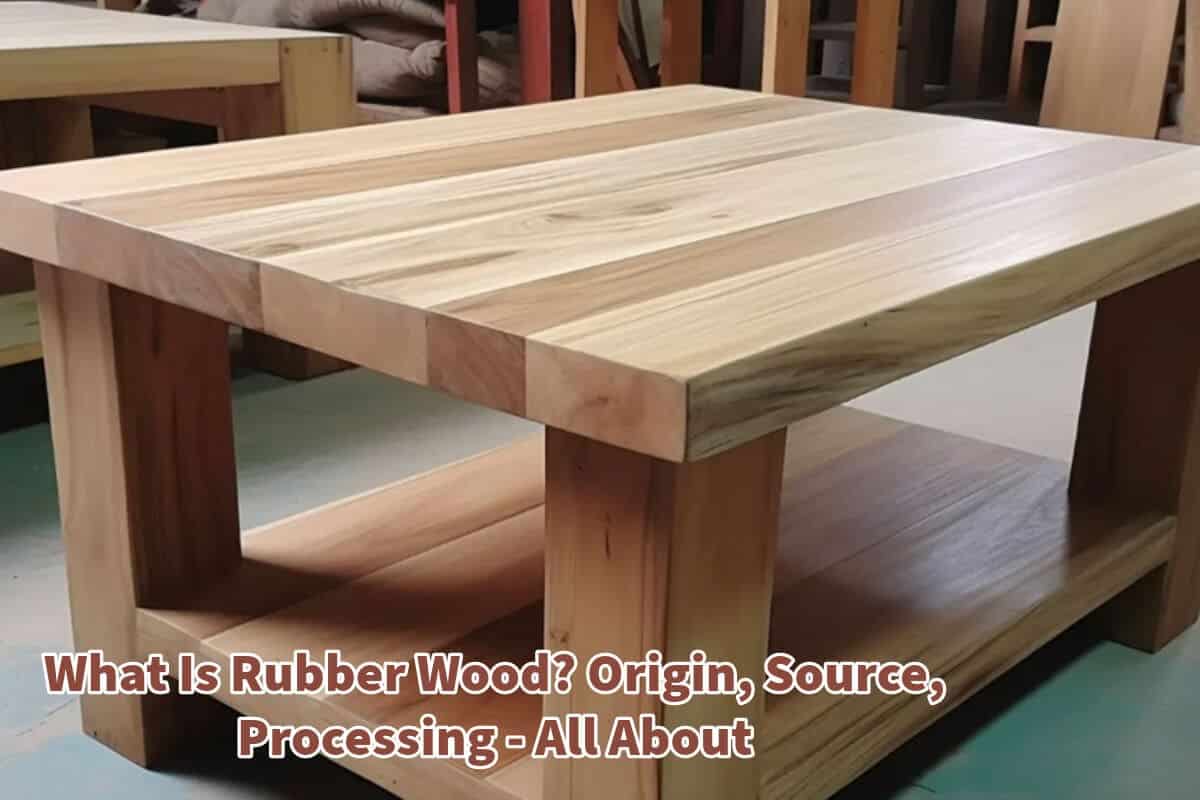Rubberwood, often referred to as parawood or by its scientific name, Hevea brasiliensis, is not a newcomer on the block but has been climbing the ranks of popularity for its furniture-making use.
Rubber wood’s rise in demand can be attributed mainly to its sustainability, affordability, and attractive appearance. In this comprehensive look at rubberwood, we’ll delve into what makes this material unique, its origins, benefits, applications in furniture making, and some tips for its care and maintenance.
Table of Contents
- The Origin And Source Of Rubberwood
- Sustainability And Environmental Impact Of Rubberwood
- Processing And Manufacturing Of Rubberwood
- Benefits Of Using Rubberwood In Furniture
- Popular Applications Of Rubberwood Furniture
- Maintenance And Care Tips For Rubberwood Furniture
- Is Rubberwood The Right Choice For You?
- Related Content
The Origin And Source Of Rubberwood
Rubberwood originates from the rubber tree, which flourishes in the tropical climates of Southeast Asia, with Thailand, Indonesia, and Malaysia being the top producers. The life of a rubber tree in the industry begins with latex production, which continues for approximately 25 to 30 years.
Once the trees cease to be a viable latex source, they are harvested for their wood – thus giving birth to rubberwood.

The Unique Characteristics Of Rubberwood
Rubberwood has certain distinctive qualities that endear it to furniture manufacturers and consumers alike:
Color:
It boasts naturally light hangings from pale cream to a medium light brown, offering a neutral base that fits in with various interior decor schemes.
Grain:
The grain of rubberwood is typically straight, with a somewhat coarse and even texture. This uniformity makes it an ideal canvas for both paint and stain.
Workability:
Rubberwood machines are easy to glue and hold fasteners without issue, which makes them a convenient material for various manufacturing processes.
Sustainability And Environmental Impact Of Rubberwood
Sustainability is perhaps the most compelling aspect of rubberwood. As a byproduct of the rubber industry, the wood is sourced from trees at the end of their economic life.
Instead of being burned or left to decompose, these trees are given a second life as furniture, which, in turn, encourages the planting of new rubber trees – a perfect model for sustainable material usage. This cycle helps in reducing environmental waste and promotes responsible forestry practices.
Processing And Manufacturing Of Rubberwood

The journey of rubberwood from tree to furniture is quite fascinating. After being harvested, the wood must be carefully processed:
Milling:
The felled rubber trees are cut into manageable sections and milled into rough lumber.
Kiln-drying:
The lumber is then dried in kilns to reduce its moisture content. This step is crucial as it prevents the problems of warping and shrinkage and prepares the wood for a long life as part of a piece of furniture.
Manufacturing:
Finally, the rubberwood is ready to be crafted into furniture. It’s milled to precise dimensions, sanded, and finished with stains or sealants to create various furniture pieces.
Benefits Of Using Rubberwood In Furniture

Rubberwood’s desirability stems from its numerous beneficial properties:
Durability:
Rubberwood is known for its impressive durability able to withstand the rigors of daily use.
Flexibility In Finishing:
Its light, natural color allows various finishes to be applied, offering designers and manufacturers a broad spectrum of aesthetic choices.
Strength:
Rubberwood has good strength properties, making it suitable for light and heavy-duty furniture.
Popular Applications Of Rubberwood Furniture
Rubberwood is highly adaptable and finds use in many different types of furniture, including:
Dining Room Sets:
Its durability makes it ideal for dining tables and chairs, which face frequent use and wear.
Bedroom Furniture:
The material’s strength and appearance are perfect for constructing bed frames and wardrobes.
Occasional Furniture:
Coffee tables, bookshelves, and desks made of rubberwood are not only functional but also bring a warm, natural feel to a space.
Maintenance And Care Tips For Rubberwood Furniture
To maintain the beauty and integrity of rubberwood furniture, some care is necessary:
Cleaning:
Use a soft cloth to dust the furniture regularly. Use a damp cloth and a mild cleaner if a deeper clean is needed.
Protection From Elements:
Keep rubberwood furniture away from prolonged exposure to sunlight and moisture, as these can cause damage over time.
Surface Care:
Utilize placemats, coasters, and tablecloths to protect the surface from scratches, spills, and heat marks.
Is Rubberwood The Right Choice For You?
Deciding whether rubberwood furniture is the right fit for your home comes down to a few considerations:

Sustainability:
Rubberwood is an excellent choice if the environmental impact is a significant factor in your decision-making.

Cost:
Rubberwood furniture provides a cost-effective yet quality option for those working within a budget.

Aesthetics:
If you appreciate the look of light-colored wood and want something that can adapt to various styles and finishes, rubberwood won’t disappoint.
Rubberwood’s journey from an overlooked byproduct to a highly valued furniture-making resource is a testament to the growing shift toward sustainable practices.
Its numerous beneficial qualities cater to various tastes and preferences while ensuring that environmental responsibility doesn’t have to come at the expense of quality or beauty. Whether you’re furnishing a home, office, or any space, rubberwood presents a sustainable, versatile, and intelligent choice that stands the test of time.
At Mondoro, we would love to help you decide which material would be best for manufacturing your home decor and furniture product.
Find out more about how Mondoro can help you create, develop, and manufacture excellent home decor and home furniture products – including lacquer furniture. Don’t hesitate to contact me, Anita. Check out my email by clicking here or become a part of our community and join our newsletter by clicking here.
Mondoro gives out a FREE Lookbook to anyone interested. You can receive a copy of our latest Lookbook by clicking here.
Listen to our Podcast called Global Trade Gal. You can find it on all major podcast platforms. Try out listening to one of our podcasts by clicking here.
Subscribe to our Mondoro Company Limited YouTube Channel filled with great videos and information by clicking here.
Related Content
10 Types of Grain Patterns of Solid Wood Furniture Explored
We will explore ten different types of grain patterns found in solid wood furniture, including Maple, Beech, Hickory, Oak, Teak, Pine, Rubberwood, Walnut, Douglas Fir, and Spruce. We will delve into the characteristics of each wood type and examine how their distinct grain patterns contribute to their suitability for furniture production.
You can discover more by reading 10 Types of Grain Patterns of Solid Wood Furniture Explored by clicking here.
Is Solid Wood Furniture Expensive? 3 Factors To Consider
Three main factors can significantly influence the furniture price if you choose solid wood. These factors include the type of wood used, the size of the furniture piece, and the construction techniques employed, all of which play a crucial role in determining the final cost. Read on as we explore each of these.
You can learn more by reading Is Solid Wood Furniture Expensive? 3 Factors To Consider by clicking here.
Why Is It So Hard To Find Solid Wood Furniture Manufacturers?
Locating trustworthy solid wood furniture manufacturers can be an intricate endeavor for retailers and wholesalers. The task’s complexity is rooted in many factors related to solid wood furniture’s production and manufacturing procedures. Read on as we explore the complex task of the search for solid wood furniture manufacturers and how Mondoro can help you.
You can learn more by reading our blog Why Is It So Hard To Find Solid Wood Furniture Manufacturers? by clicking here.

